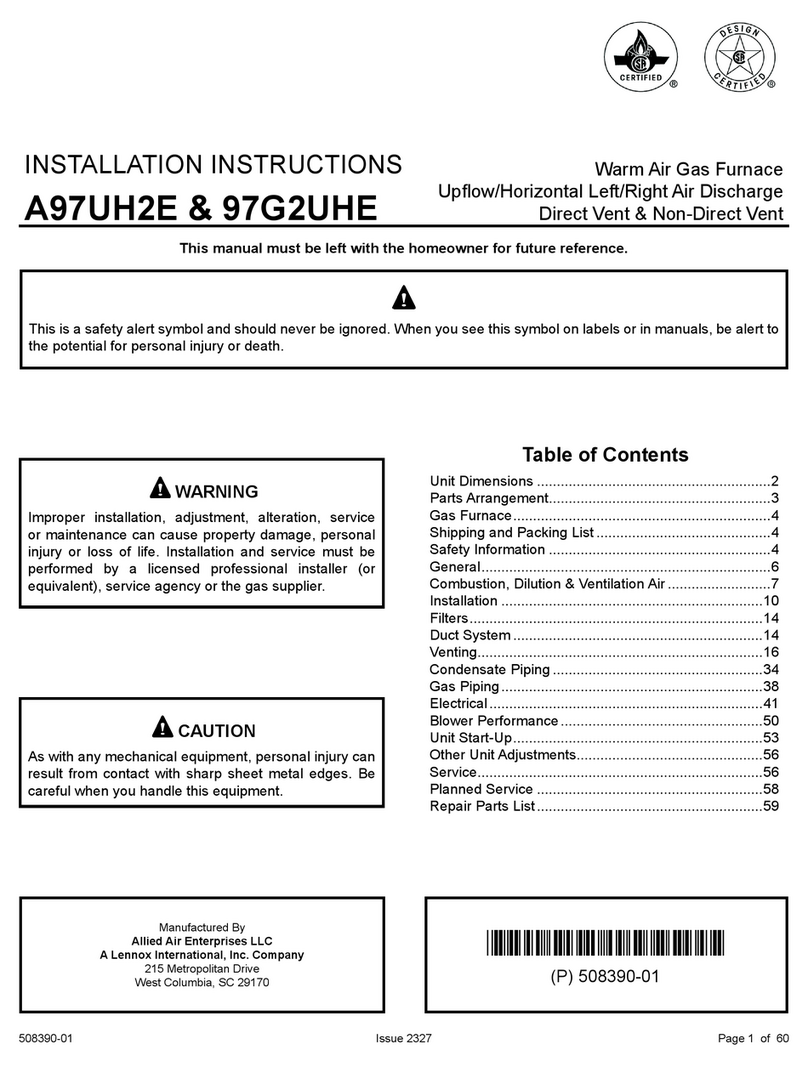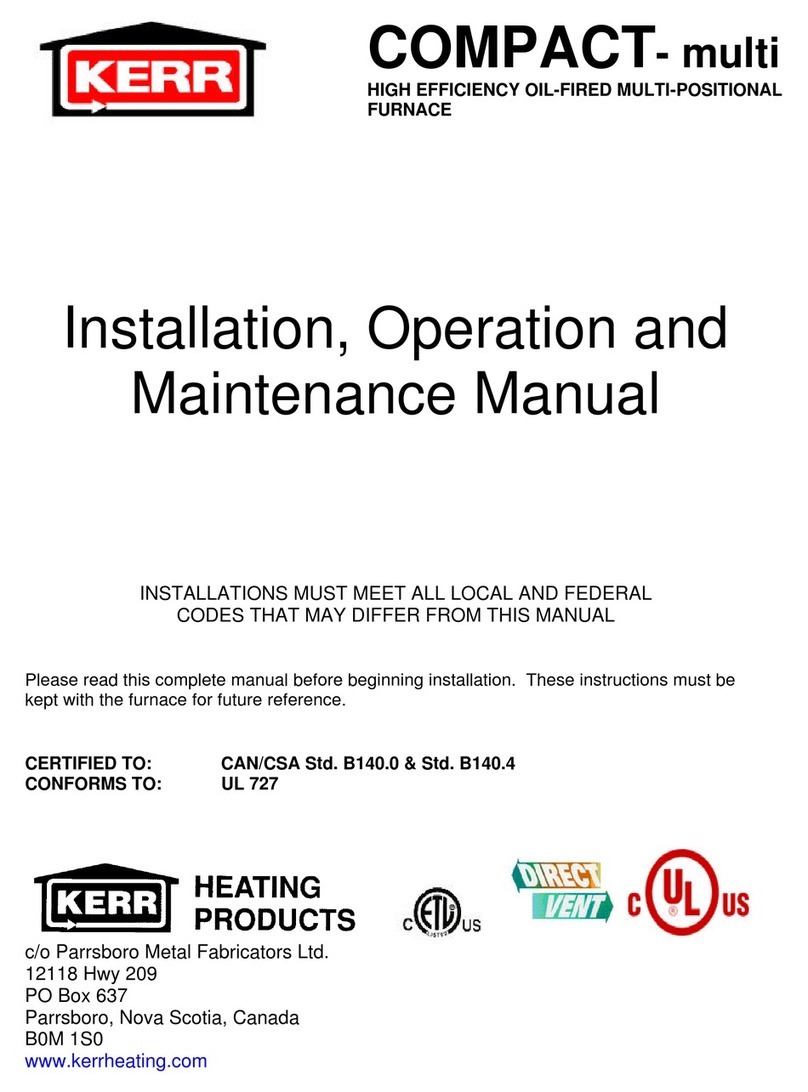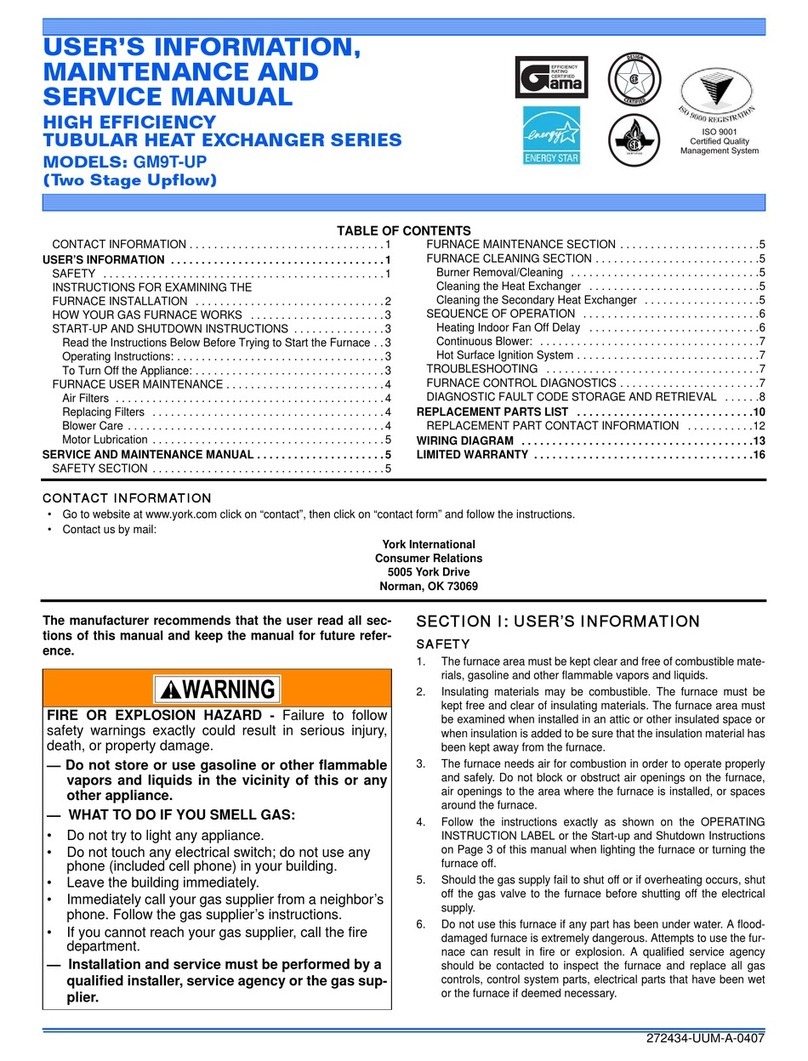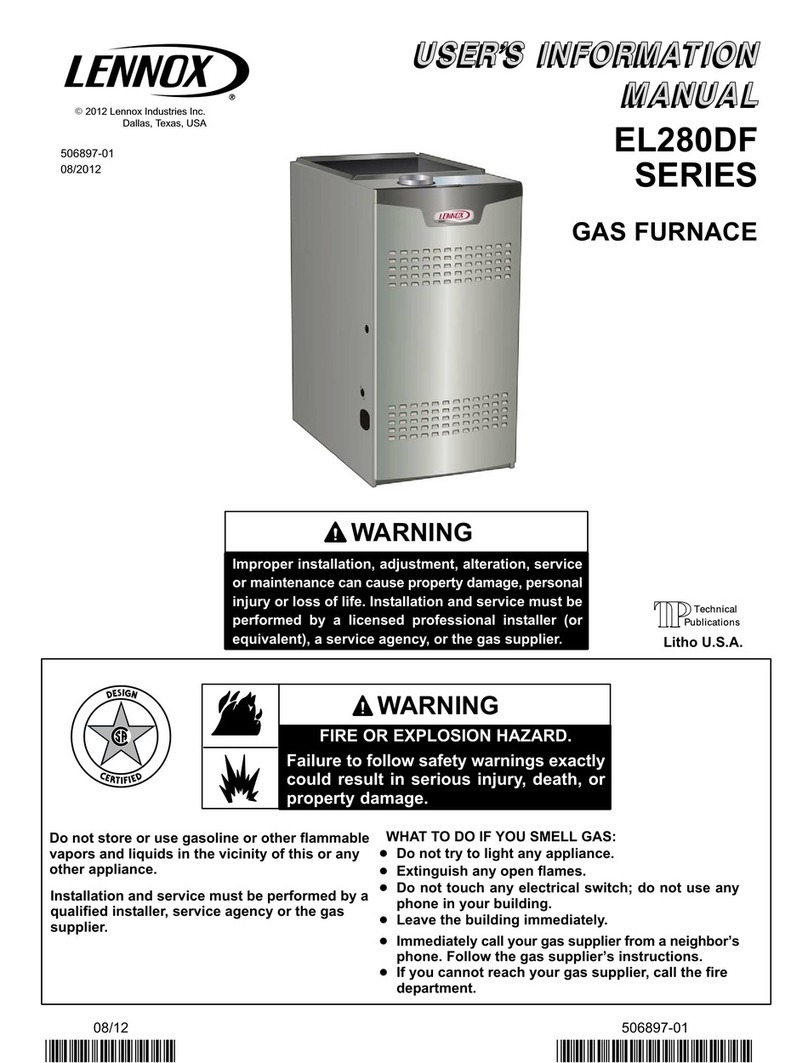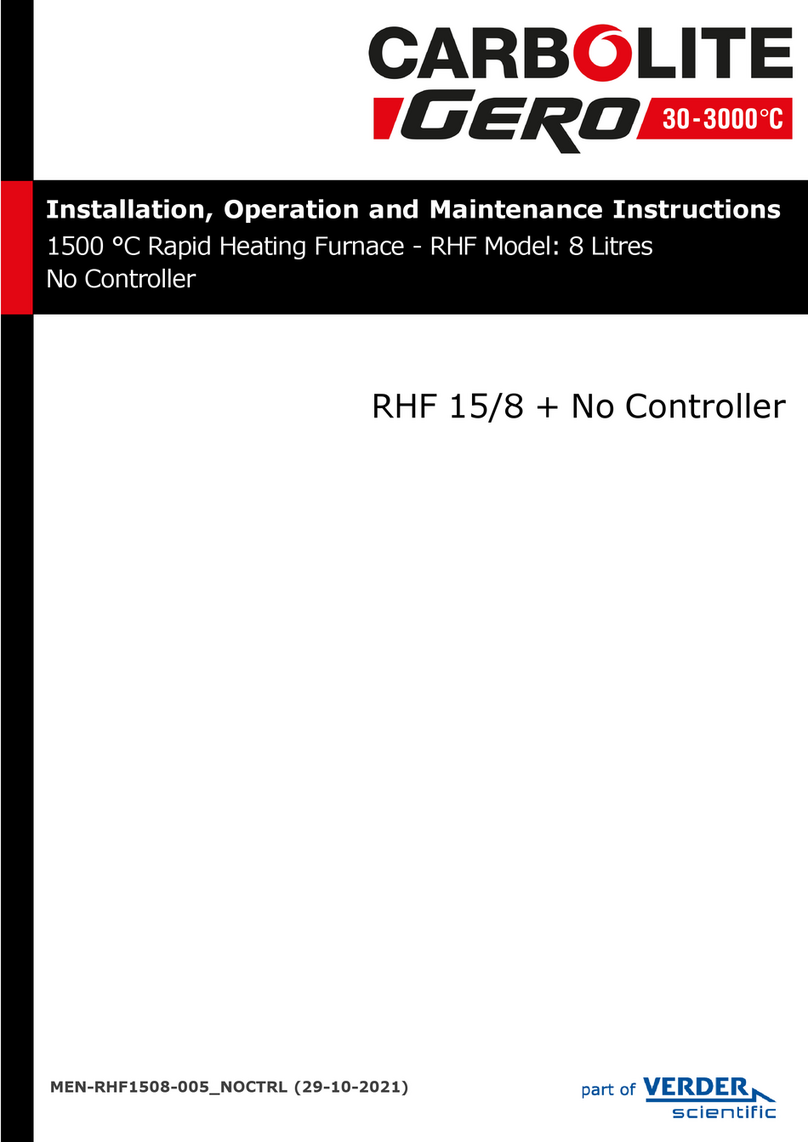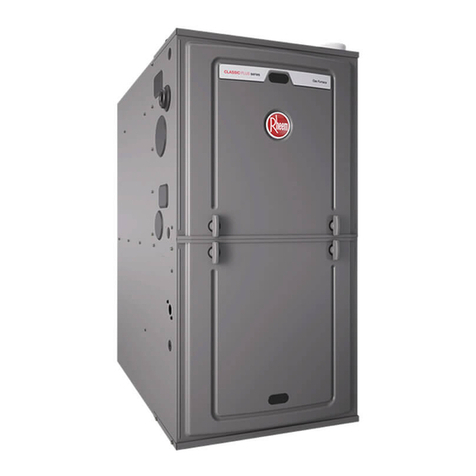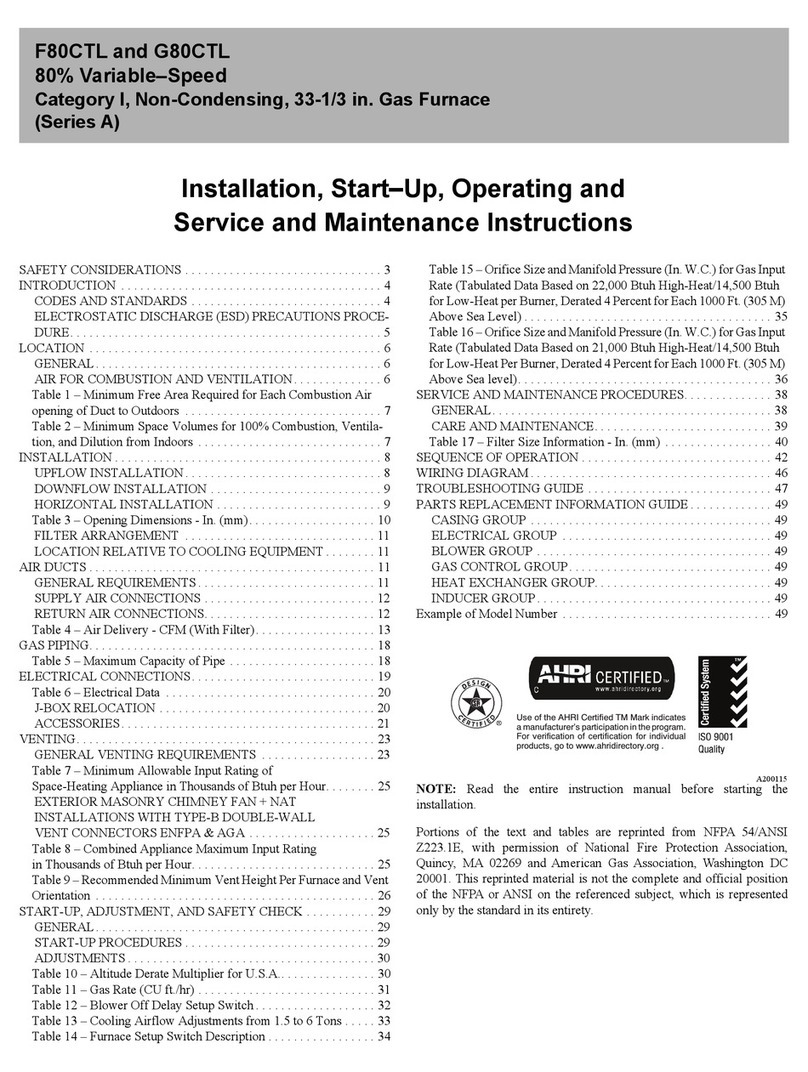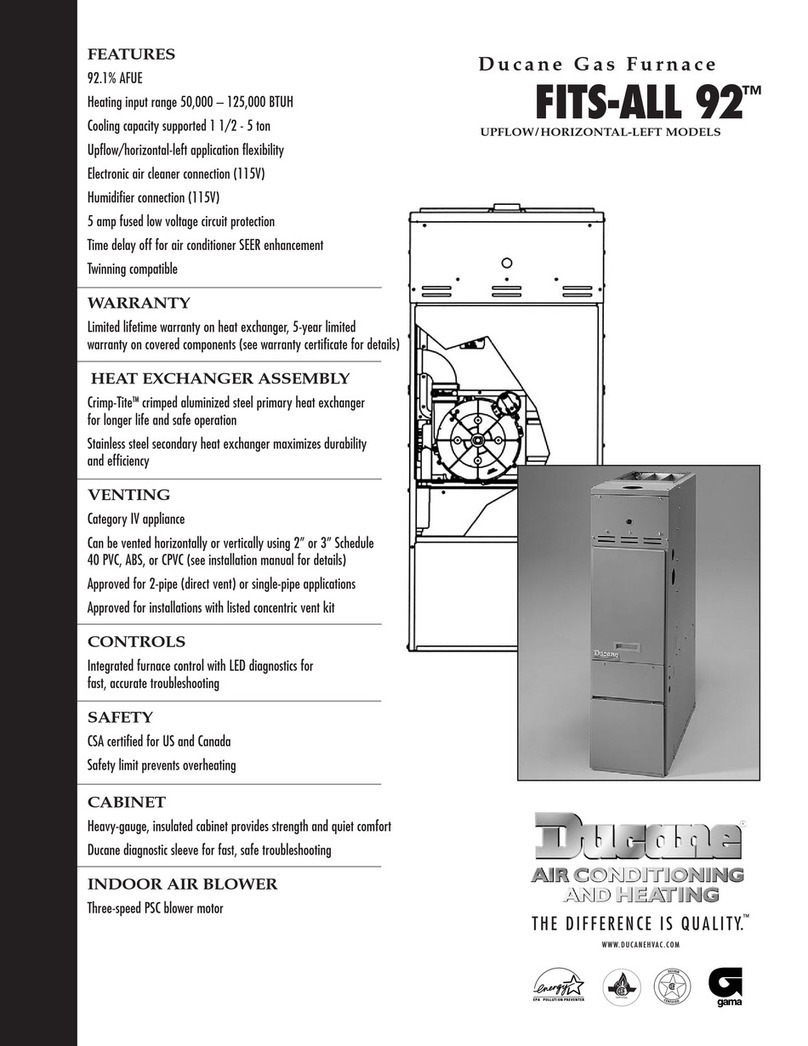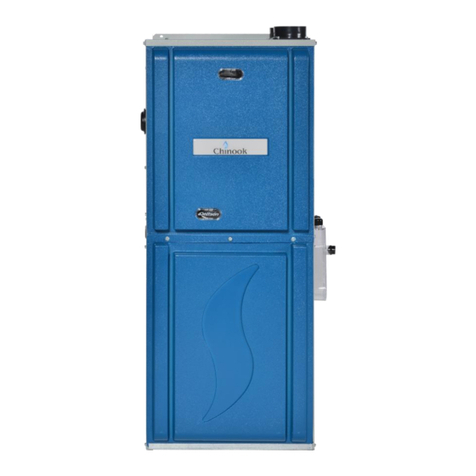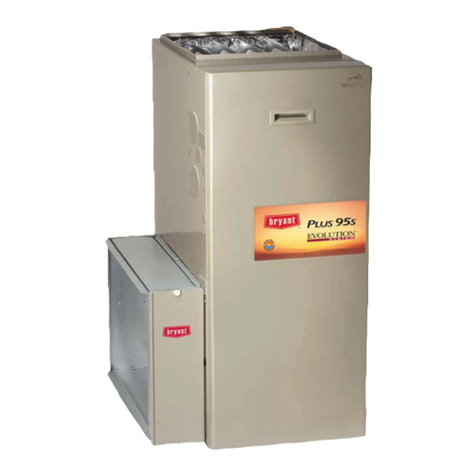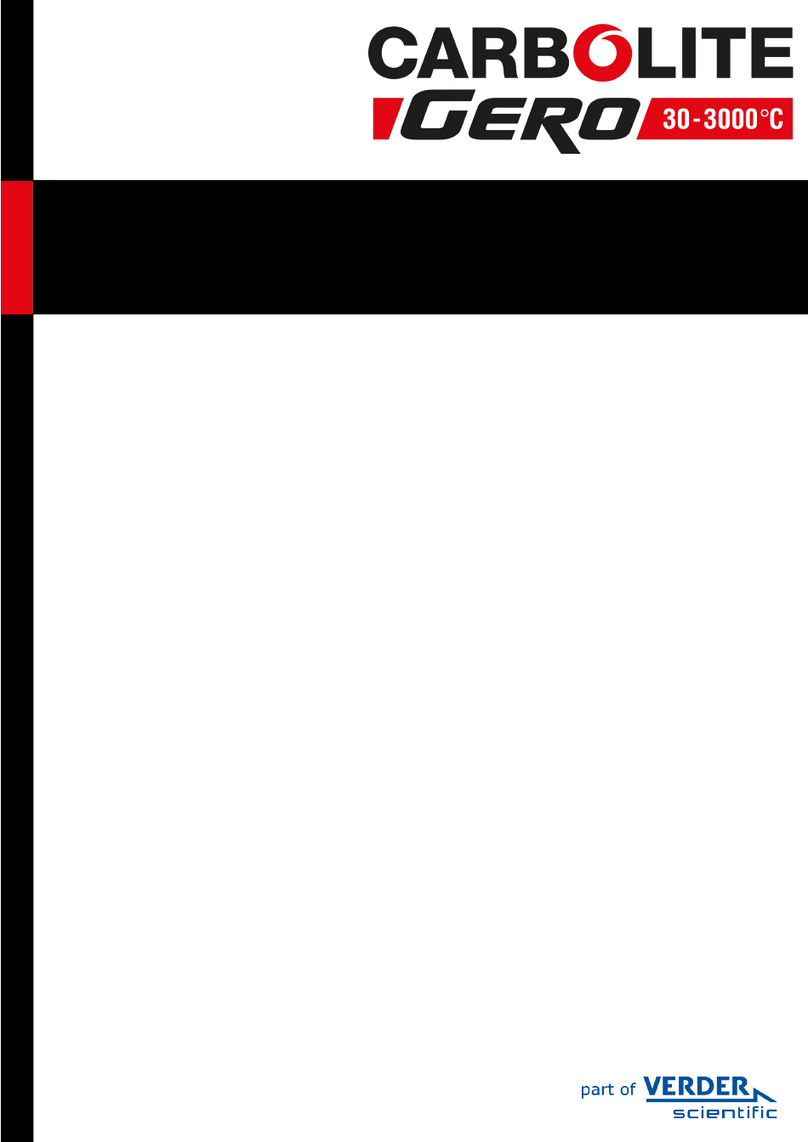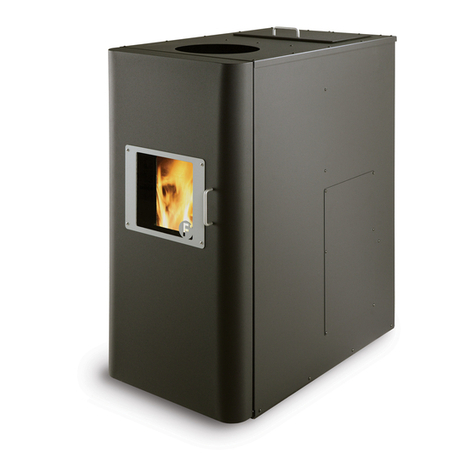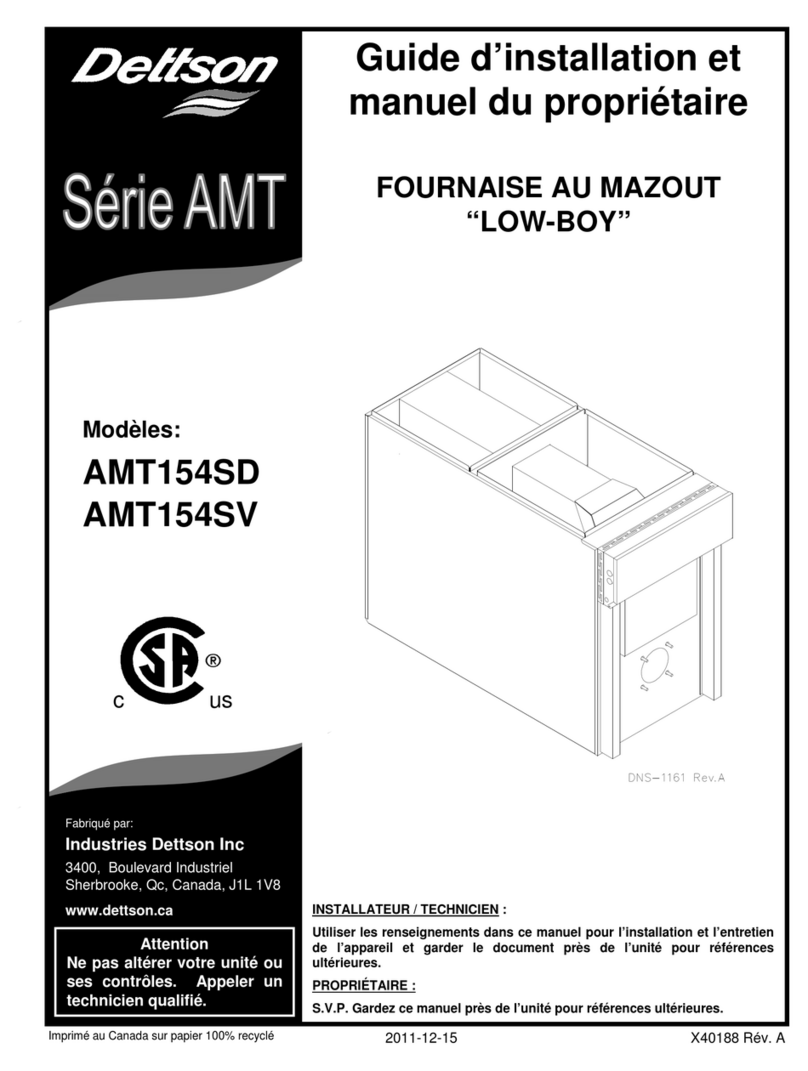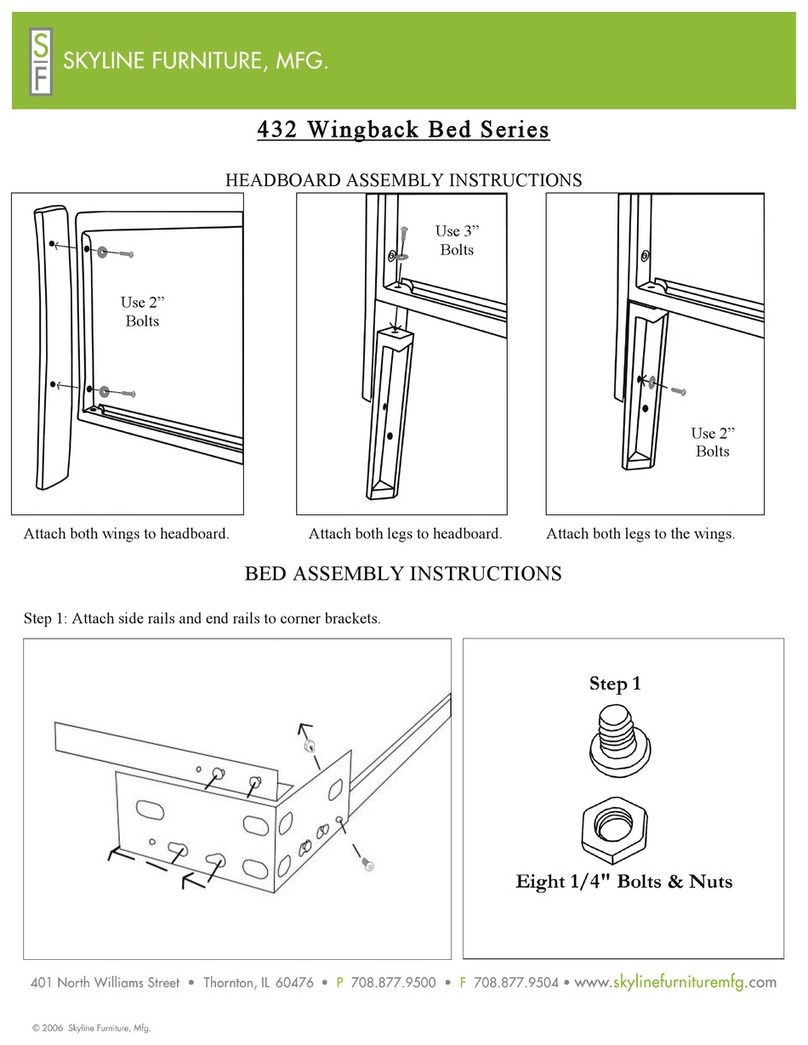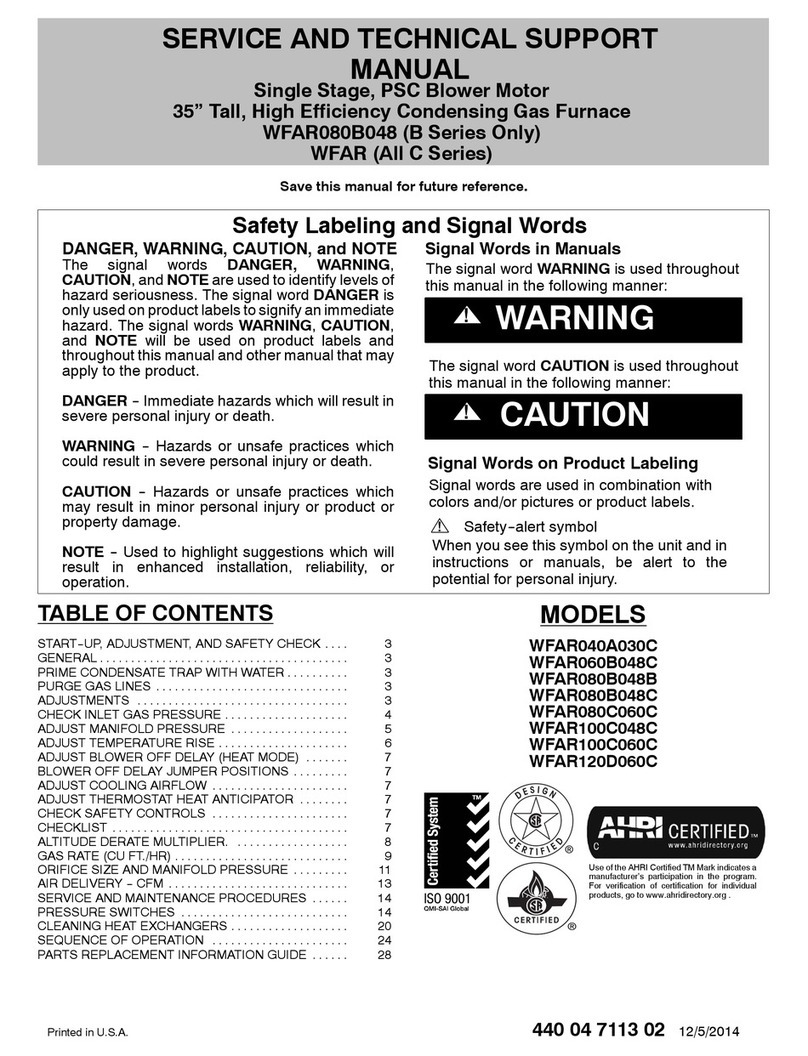
INSTALLATION INSTRUCTIONS Gas Furnace: WFAR
4440 01 7104 02
Specifications subject to change without notice.
11. See Table 2 for required clearances to combustible
construction.
12. Maintain a 1--in. (25 mm) clearance from combustible
materials to supply air ductwork for a distance of 36 in.
(914 mm) horizontally from the furnace. See NFPA 90B
or local code for further requirements.
13. These furnaces SHALL NOT be installed directly on
carpeting, combustible tile, or any other combustible
material other than wood flooring. In downflow
installations, factory accessory floor base MUST be used
when installed on combustible materials and wood
flooring. Special base is not required when this furnace is
installed on manufacturer’s Coil Assembly or when Coil
Box is used. See Table 2 for clearance to combustible
construction information.
NOTICE
IMPORTANT INSTALLATION AND START--UP
PROCEDURES
Failure to follow this procedure may result in a nuisance smoke
or odor complaint.
The manifold pressure, gas rate by meterclocking,temperature
rise and operation must be checked after installation. Minor
smoke and odor may be presenttemporarily after start--up from
the manufacturing process. Some occupants are more
sensitive to this minor smoke and odor. It is recommended that
doors and windows be open during the first heat cycle.
INTRODUCTION
This 4--way multipoise Category IV condensing furnace is CSA
design--certified as a direct vent (2-pipe) or non-direct vent
(1-pipe) furnace. (See Figure 2.) The furnace is
factory--shipped for use with natural gas. The furnace can be
converted in the field for use with propane gas when a
factory-supplied conversion kit is used. Refer to the furnace
rating plate for conversion kit information.
This furnace is approved for installation in a mobile home when
a factory-supplied accessory mobile home conversion kit is
used. The conversion kit is required for use with both natural
and propane gas. The furnace must also be installed on a
factory-supplied accessory combustible floor base or
evaporator coil casing.
This furnace is designed for minimum continuous return--air
temperature of 60_F(15_C) db or intermittent operation down
to 55_F(13_C) db such as when used with a night setback
thermostat. Return-air temperature must not exceed 80_F
(27_C) db. Failure to follow these return-air temperature limits
may affect reliability of heat exchangers, motors, and controls.
(See Figure 3).
The furnace should be sized to provide 100 percent of the
design heating load requirement plus any margin that occurs
because of furnace model size capacity increments. None of
the furnace model sizes can be used if the heating load is
20,000 BTU or lower. Use Air Conditioning Contractors of
America (Manual J and S); American Society of Heating,
Refrigerating, and Air--Conditioning Engineers; or other
approved engineering method to calculate heating load
estimates and select the furnace. Excessive oversizing of the
furnace may cause the furnace and/or vent to fail prematurely,
customer discomfort and/or vent freezing.
Failure to follow these guidelines is considered faulty
installation and/or misapplication of the furnace; and resulting
failure, damage, or repairs may impact warranty coverage.
For accessory installation details, refer to the applicable
instruction literature.
NOTE: Remove all shipping materials, loose parts bag, and
literature before operating the furnace. (See Table 1).
CODES AND STANDARDS
Follow all national and local codes and standards in
addition to these instructions. The installation must comply
with regulations of the serving gas supplier, local building,
heating, plumbing, and other codes. In absence of local codes,
the installation must comply with the national codes listed
below and all authorities having jurisdiction.
In the United States and Canada, follow all codes and
standards for the following:
Safety
SUS: National Fuel Gas Code (NFGC) NFPA
54--2012/ANSI Z223.1--2012 and the Installation
Standards, Warm Air Heating and Air Conditioning
Systems ANSI/NFPA 90B
SA manufactured (Mobile) home installation must
conform with the Manufactured Home Construction
and Safety Standard, Title 24 CFR, Part 3280, or
when this standard is not applicable, the Standard for
Manufactured Home Installation (Manufactured Home
Sites, Communities, and Set-Ups),ANSI/NCS A225.1,
and/or CAN/CSA-Z240, MH Series Mobile Homes
SCANADA: National Standard of Canada, Natural Gas
and Propane Installation Code (NSCNGPIC)
CAN/CSA B149.1--2010
General Installation
SUS: NFGC and the NFPA 90B. For copies, contact the
National Fire Protection Association Inc.,
Batterymarch Park, Quincy, MA 02269; or for only the
NFGC contact the American Gas Association, 400 N.
Capitol, N.W., Washington DC 20001
SCANADA: NSCNGPIC. For a copy, contact Standard
Sales, CSA International, 178 Rexdale Boulevard,
Etobicoke (Toronto), Ontario, M9W 1R3, Canada
Combustion and Ventilation Air
SUS: Section 9.3 of the NFPA54/ANSI Z223.1--2012 Air
for Combustion and Ventilation
SCANADA: Part 8 of the CAN/CSA B149.1--2010,
Venting Systems and Air Supply for Appliances
Duct Systems
SUS and CANADA: Air Conditioning Contractors
Association (ACCA) Manual D, Sheet Metal and Air
Conditioning Contractors National Association
(SMACNA), or American Society of Heating,
Refrigeration, and Air Conditioning Engineers (ASHRAE)
2005 Fundamentals Handbook Chapter 35
Acoustical Lining and Fibrous Glass
Duct
SUS and CANADA: current edition of SMACNA, NFPA
90B as tested by UL Standard 181 for Class I Rigid Air
Ducts
Gas Piping and Gas Pipe Pressure
Testing
SUS: NFPA 54/ANSI Z223.1--2012 NFGC; Chapters 5,
6, 7, and 8 and national plumbing codes.
CANADA: CAN/CSA--B149.1--2010, Parts 4, 5, 6, and
9.
In the state of Massachusetts:
SThis product must be installed by a licensed plumber or
gas fitter.
SWhen flexible connectors are used, the maximum
length shall not exceed 36 in. (914 mm).




















